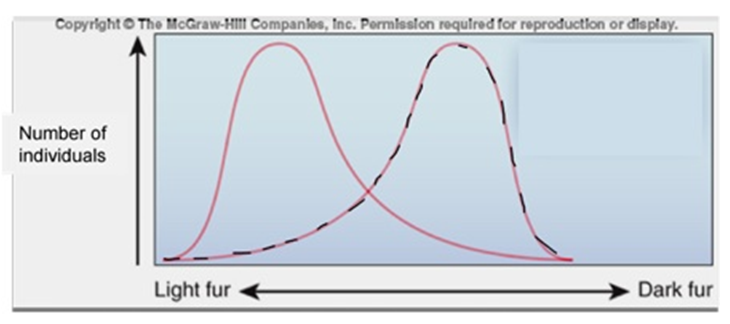Each of the following is involved in plants cell cytokinesis except
A) phragmoplast alignment of Golgi-derived vesicles in the center of the dividing cell.
B) fusion of Golgi-derived vesicles to form the cell plate.
C) assembly of vesicle noncellulose components to form the primary cell wall.
D) abscission of the cell into two cells.
E) All are involved in plant cytokinesis.
Answer: D
You might also like to view...
What type of natural selection are the population of voles going through?
A population of voles (very small mammals) live in a shady forest. The all of the voles are a light tan color, a dark brown coloration arises by a new mutation. The darker voles are harder for predators to see in the leaf litter, thus they are less susceptible to predation. After 10 generations the majority of voles in the population are the dark brown color. In the figure above the solid red line represents the number of light colored individuals before the mutation and the black dashed line represents the number of dark brown individuals after 10 generations.

A. Directional selection.
B. Stabilizing selection.
C. Diversifying selection (disruptive selection).
D. Balancing selection.
E. Negative frequency-dependent selection.
Which of the following nonpathogenic protozoa has a very large glycogen vacuole in its cyst form and measures approximately 5 to 20 µm in diameter?
a. E. coli b. I. butschlii c. E. dispar d. E. nana
The first true hominids in the fossil record are
a. Australopithecus. b. Homo habilis. c. the chimpanzee. d. Homo sapiens.
What is the primary reason internal homeostasis must be maintained?
A) Most organisms have not evolved mechanisms to control positive feedback systems. B) Enzymes must retain their correct three-dimensional structure. C) Homeostasis prevents the wasting of stockpiles of coenzymes. D) Unregulated variations cause the cells' DNA to mutate. E) Wide swings in the internal environment interfere with normal metabolic reactions.